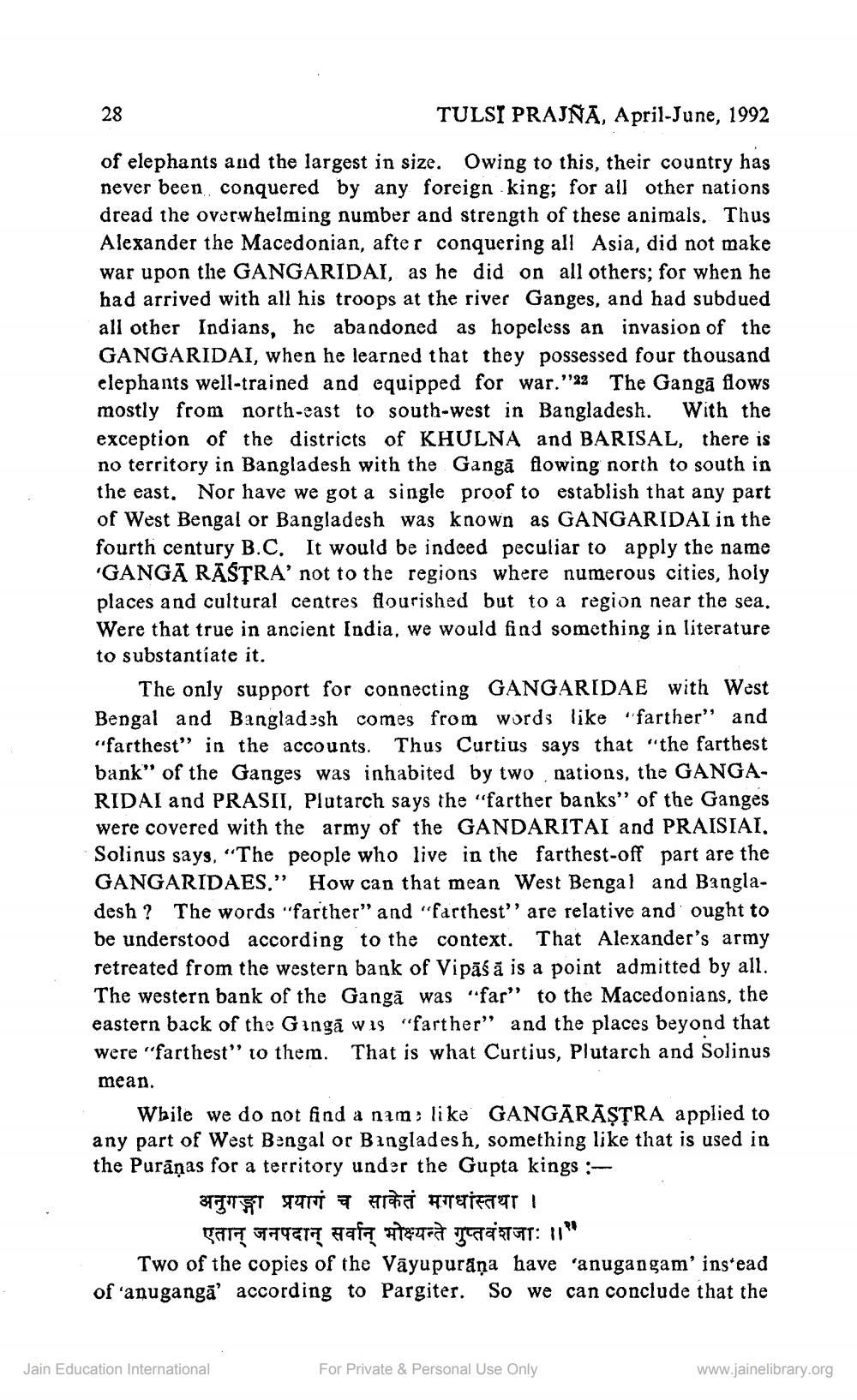________________
28
TULSI PRAJNA, April-June, 1992
of elephants and the largest in size. Owing to this, their country has never been conquered by any foreign king; for all other nations dread the overwhelming number and strength of these animals. Thus Alexander the Macedonian, after conquering all Asia, did not make war upon the GANGARIDAI, as he did on all others; for when he had arrived with all his troops at the river Ganges, and had subdued all other Indians, he abandoned as hopeless an invasion of the GANGARIDAI, when he learned that they possessed four thousand elephants well-trained and equipped for war."'92 The Gangă flows mostly from north-east to south-west in Bangladesh. With exception of the districts of KHULNA and BARISAL, there is no territory in Bangladesh with the Gangă flowing north to south in the east, Nor have we got a single proof to establish that any part of West Bengal or Bangladesh was known as GANGARIDAI in the fourth century B.C. It would be indeed peculiar to apply the name GANGĀ RĀSTRA' not to the regions where numerous cities, holy places and cultural centres flourished but to a region near the sea. Were that true in ancient India, we would find something in literature to substantiate it.
The only support for connecting GANGARIDAE with West Bengal and Bangladesh comes from words like farther" and "farthest" in the accounts. Thus Curtius says that "the farthest bank" of the Ganges was inhabited by two nations, the GANGARIDAI and PRASII, Plutarch says the "farther banks" of the Ganges were covered with the army of the GANDARITAI and PRAISIAI. Solinus says, "The people who live in the farthest-off part are the GANGARIDAES." How can that mean West Bengal and Bangladesh? The words "farther" and "farthest'' are relative and ought to be understood according to the context. That Alexander's army retreated from the western bank of Vipāśā is a point admitted by all. The western bank of the Gangā was far" to the Macedonians, the eastern back of the Gingā w is "farther” and the places beyond that were "farthest” 10 them. That is what Curtius, Plutarch and Solinus mean.
While we do not find a nım; like GANGĀRĀSTRA applied to any part of West Bengal or Bangladesh, something like that is used in the Purāņas for a territory under the Gupta kings :
अनुगङ्गा प्रयागं च साकेतं मगधांस्तथा ।
एतान् जनपदान् सर्वान् भोक्ष्यन्ते गुप्तवंशजाः ।।" Two of the copies of the Vāyupurāņa have 'anugangam' inséead of 'anugangā' according to Pargiter. So we can conclude that the
Jain Education International
For Private & Personal Use Only
www.jainelibrary.org




